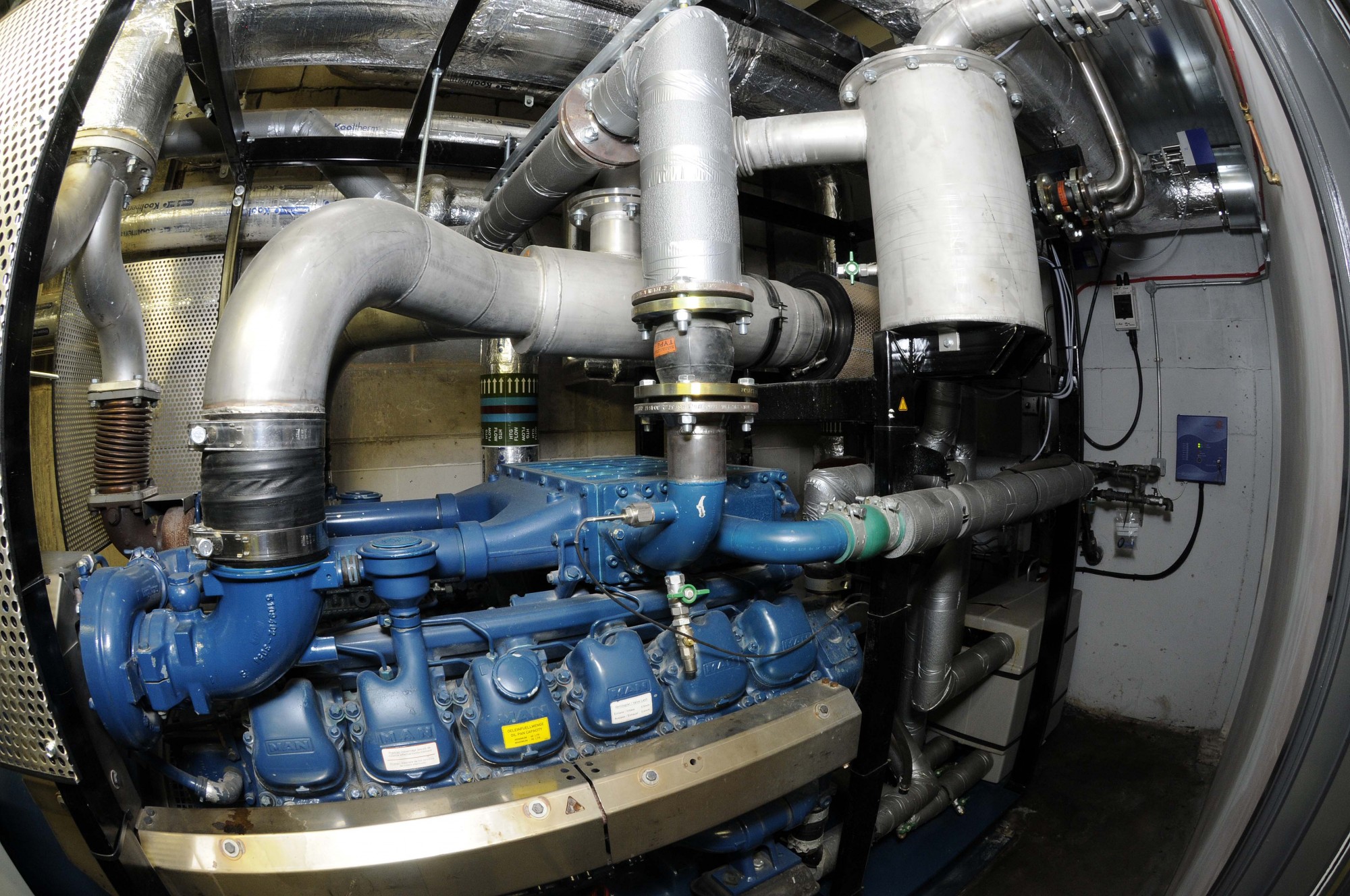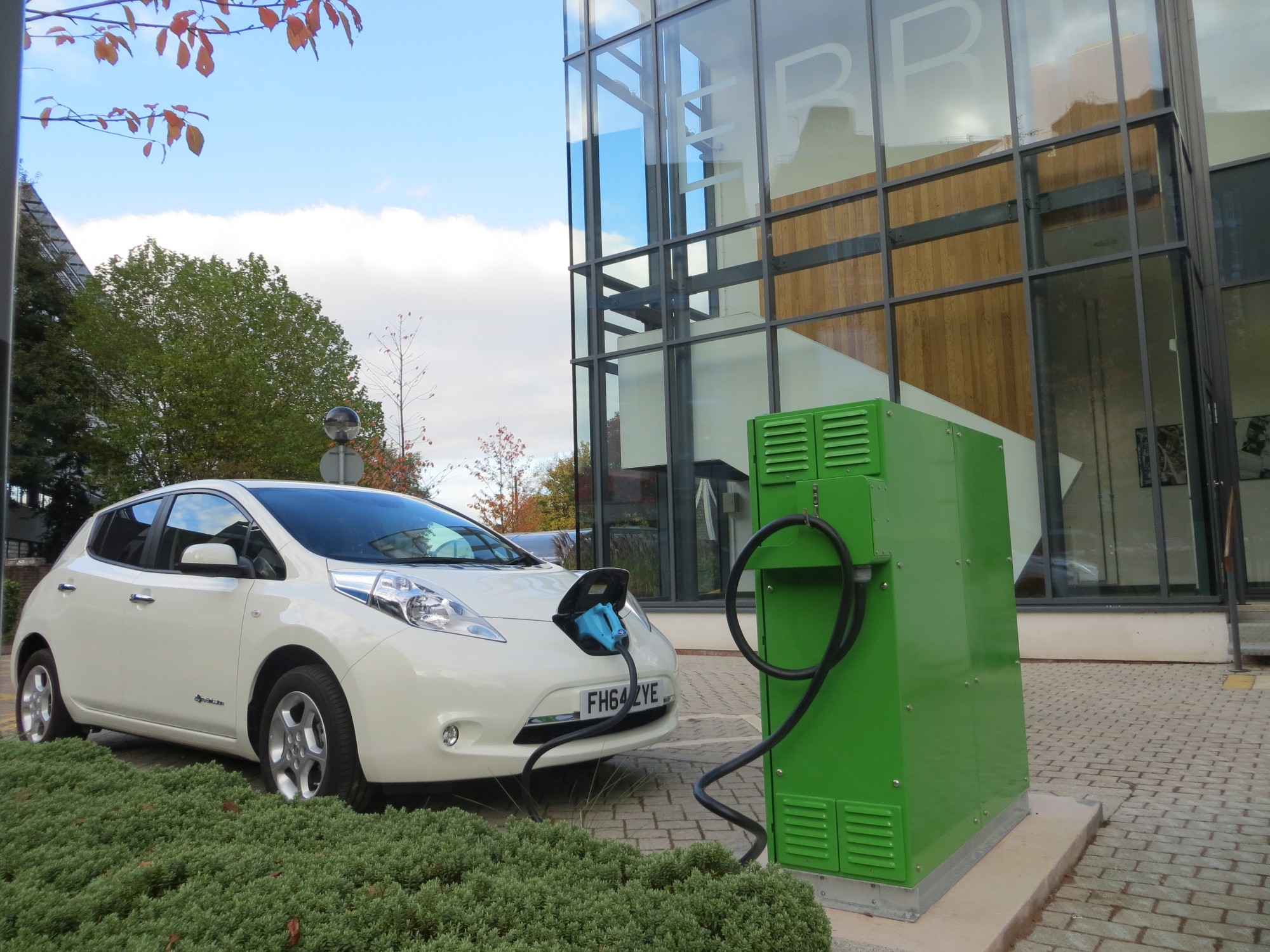Demand Management, Energy Efficiency, Energy Storage, Microgrids, CHP, Distributed Generation, Sourcing Renewables - August 10, 2017 - By Megan Corsano
UK university implements biofuel CHP plant
The EBRI houses the CHP plant that allows the university more flexibility with its energy. Photo provided by Aston University.
A university in the U.K. recently implemented a biofuel combined heat and power plant focused on creating flexibility behind the meter, allowing customers to be more in control of how they use their own power, in what the team behind the project calls an “energy system of the future.”
Dr. Daniel Wright and his colleague Dr. James Scott first started developing the technology in 2013 while working as researchers at the European Bioenergy Research Institute at Aston University in Birmingham, England, after noticing inefficiencies in the university’s previous generation system.
The new system also implements upgraded energy management software for optimizing the energy produced in the cogeneration plant, the two explained in an interview with Smart Energy Decisions. Since completion of the project, the EBRI generator has been providing heat for three buildings on the university’s campus, which has already seen a 10% reduction in its energy use.
 |
Wright calls the biofuel CHP plant akin to an "energy system of the future," shown in this photo provided by Aston University. |
The team behind the project developed the CHP plant to run on biofuels, such as used cooking oil and fish oil pressings, and ultimately used their backgrounds in mathematics to explore alternatives to controlling the engine onsite to optimize its efficiency.
“We realized there was a big gap in the knowledge there, which gave us the opportunity to maybe do something a bit more intelligent and efficient with it,” Wright said.
The system sits within the microgrid of the university and allows the controller to decide when to get power from the grid and when to be provided power from the engine, seamlessly transitioning between the two with no change in power supply. The project utilizes connectivity software from Kepware that allows it to communicate and log large volumes of data across several control systems.
Within the system, water tanks act as a thermal storage mechanism that allows the user to decide whether they charge it with energy and use it to heat the buildings throughout the day, or use the absorption chiller, which turns hot water into cooling and use it to cool the building.
Wright and Scott said the control map was the main focus for optimization: Using the meter to predict how the buildings will use energy over next 12 or 24 hours, analyzing areas of peak power usage during different times of the day and enacting those optimization systems through controlling mechanisms.
The project’s most unique attributes are its ability to distribute excess energy that has been generated back to the surrounding city, and its use of a new vehicle-to-grid technology.
 |
The vehicle-to-grid technology allows the user to take full advantage of its energy supply, shown in this photo provided by Aston University. |
Wright said the idea of using electric vehicle battery storage as a way of supplying energy back to the grid, and ultimately back into the building, was born out of the idea of people utilizing their electric vehicles in times of blackouts to power their homes.
“All of this together we thought was akin to an energy system of the future,” Wright said.
According to the two researchers, there is large demand for heating in the U.K., but engines generally produce more heat than power, creating a lot of surface heat and ultimately hampering efficiency.
Since the success of the CHP plant on Aston University’s campus, the duo have spun the project off into its own independent commercial startup company, called Grid Edge, to provide similar systems for large corporations in the U.K.
Wright and Scott received initial funding for the research project from Innovate U.K., an innovation agency that funds research that can be commercialized within the next two to five years. The next steps for the company include the installation of one of their generation systems at seven planned sites in the next six to 12 months, the first of which will be at a large shopping center in Birmingham.
“We've persuaded [energy managers] that what they've got at the moment isn't good enough, which they largely agree with, and that there could be some improvements made to the way their buildings are run,” Scott said.
A central part of the project is redistributing excess heating energy back in the nearby Birmingham community, which Wright and Scott have worked closely with during the development of the CHP technology. When the system is running in the evening after students have left campus, the excess can be distributed to other locations, such as nearby hospitals and hotels.
“If they are using localized biofuel generated heat and power, they decarbonize their heat network, which is good for their carbon targets and ultimately their bottom line,” Scott said. “This would really be the first of its kind for the company that runs most of the heat networks in the U.K. - connecting to a third party asset, a localized biofuel based power station.”
Scott and Wright said they see the most interest in the technology from energy managers near the end of their carbon reduction journey, rather than the beginning. What they said sets the technology apart is the way it allows energy managers to predict future energy use rather than assessing past use.
“It’s really been attractive to managers who have already implemented carbon reduction, energy efficiency programs, but haven't gotten all they can out of it,” Scott said. “It only works if you've got well informed, properly connected, high-performance energy management going on in organizations.
Stay Up-To-Date












